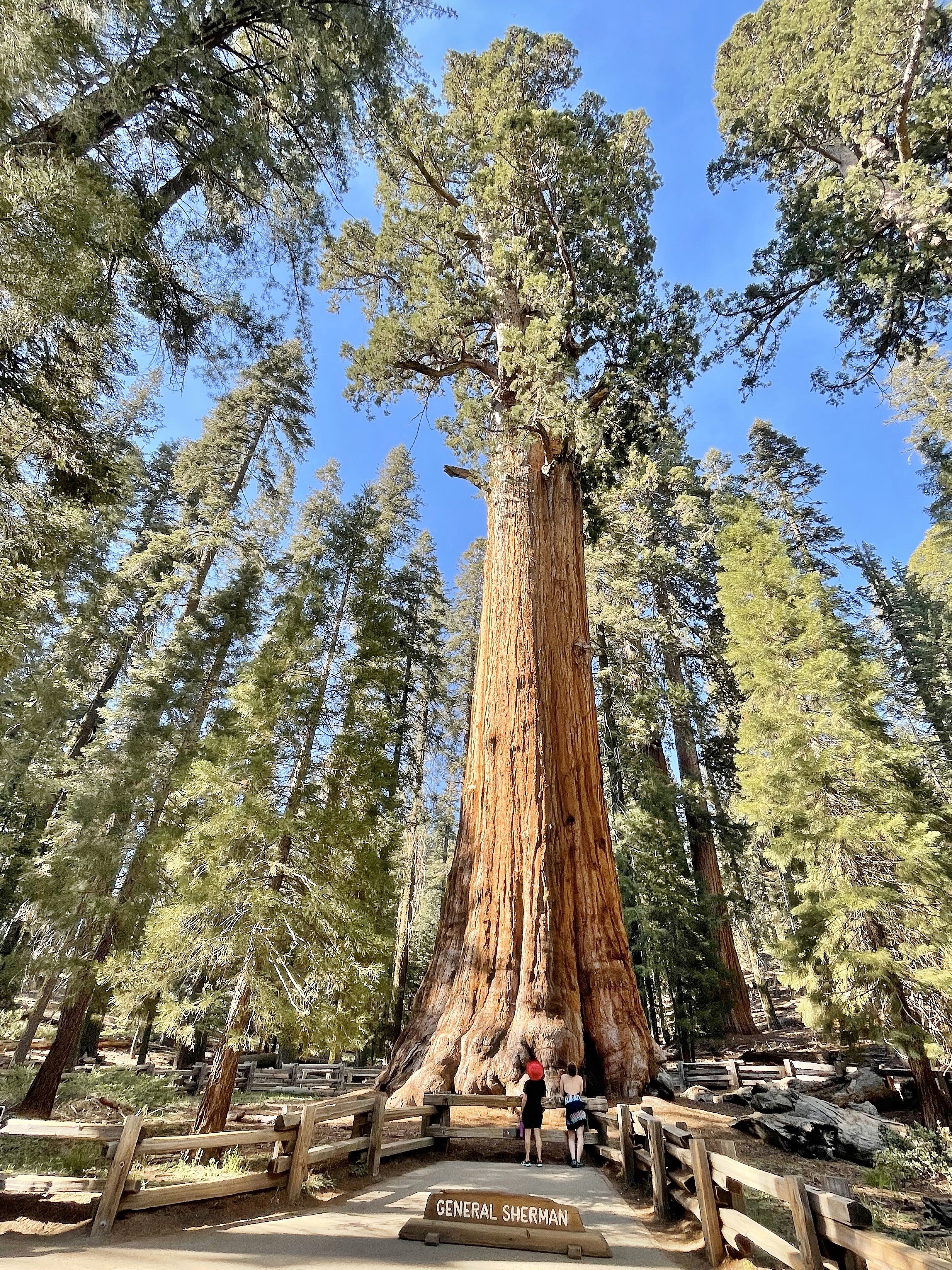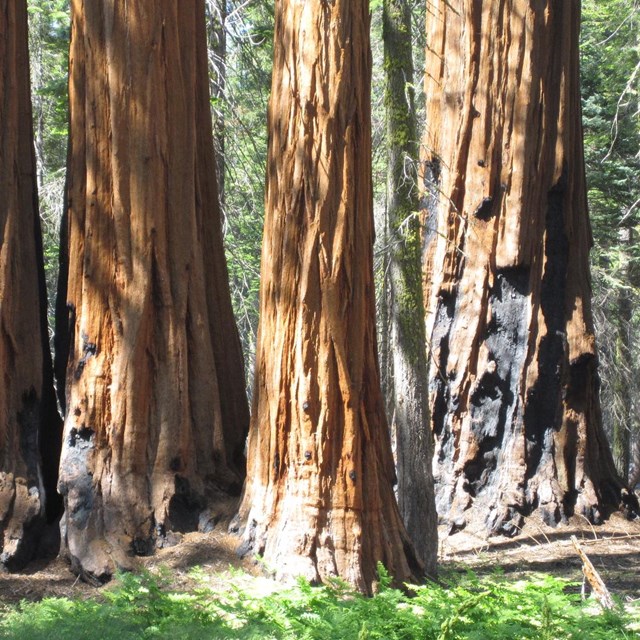Strategy Your Check Out to Sequoia National Park CA-- Whatever You Need to Know
Strategy Your Check Out to Sequoia National Park CA-- Whatever You Need to Know
Blog Article
Check Out the Diverse Wildlife Habitats Within Sequoia National Park
Sequoia National Forest is an environmental prize, showcasing a remarkable variety of wild animals environments that contribute to its abundant biodiversity. From the impressive huge sequoia forests to the diverse alpine fields, each atmosphere plays an important duty in supporting various types, including both usual and uncommon fauna. The interaction of these environments not just fosters a special ecological community yet likewise emphasizes the value of conservation initiatives in preserving this balance. As we check out the certain qualities of these environments, interesting inquiries emerge concerning the interconnectedness of life within this amazing landscape.
Introduction of Sequoia National Park
Sequoia National forest, nestled in the southern Sierra Nevada chain of mountains of The golden state, is renowned for its impressive landscapes and towering giant sequoias. Established in 1890, it is just one of the earliest national forests in the USA, devoted to protecting the all-natural appeal and ecological honesty of this special region. The park incorporates over 404,000 acres of diverse surface, including impressive mountains, deep canyons, and lavish meadows.

Site visitors can discover many hiking tracks, ranging from leisurely walks to tough backcountry courses, each using an unique viewpoint of the park's magnificence. With its mix of natural wonders and entertainment opportunities, Sequoia National Park offers as a vital shelter for both wild animals and those seeking to get in touch with nature.

Significant Wildlife Environments
The diverse landscapes of Sequoia National Park create a mosaic of wildlife environments that support an abundant variety of varieties. These environments vary from rich meadows and dense woodlands to rocky alpine zones and expansive river valleys, each providing one-of-a-kind environmental niches.
One noticeable environment is the giant sequoia woodland, defined by towering trees and an abundant understory, which sustains various animals, birds, and insects. The combined conifer forests, made up of types such as sugar yearn and white fir, deal additional sanctuary and food resources for wild animals.
Meadows and meadows play an important function in the park's ecosystems, functioning as essential foraging grounds for herbivores like deer and little creatures. These open locations likewise bring in varied bird types, particularly throughout movement periods.
The park's higher altitudes feature towering habitats, where conditions are extreme and types are adapted to survive in such extremes (Sequoia National Park hour). Right here, one can find unique plants and fauna that thrive in rough, cool environments
Vegetation and Animal Variety
Within the diverse ecological communities of Sequoia National forest, a remarkable variety of vegetation and fauna coexists, showcasing the complex relationships that maintain the park's biodiversity. The park is home to over 1,300 plant types, including the iconic gigantic sequoias, which are among the largest and earliest trees on Planet. These stunning trees supply important environment and food resources for various wildlife, fostering a complicated internet of environmental communications.
Pet species in Sequoia National forest are similarly varied, with habitats varying from lowland foothills to high towering settings. Animals such as black bears, mule deer, and bobcats thrive in this abundant environment, while bird types, including the impressive golden eagle and the evasive seen owl, grace the skies. Amphibians and reptiles, like the Sierra amphibian and the western rattlesnake, also play essential roles in keeping ecological equilibrium.
The park's distinct combination of elevation gradients and microclimates sustains these varied species, highlighting the relevance of protecting the all-natural environments that permit such a rich tapestry of life to grow. Understanding this variety is critical for appreciating the ecological value of Sequoia National Park.
Preservation Efforts in the Park
Preservation initiatives in Sequoia National Park play a critical role in securing its unique communities and the diverse species that inhabit them. The park employs a multifaceted technique, consisting of environment remediation, species checking, and intrusive varieties administration. These initiatives are crucial for preserving the delicate equilibrium of the park's environments, which consist of gigantic sequoias, meadows, and alpine environments.
Active remediation projects concentrate on improving native plant areas and fixing up abject habitats. Sequoia National Park hour. This is especially important in areas affected by human activity or natural disturbances such as wildfires. The park's directory biologists perform normal tracking of crucial species, consisting of the endangered Sierra Nevada bighorn sheep, to analyze population health and wellness and notify monitoring strategies
Invasive species posture a considerable danger to the park's biodiversity. To combat this, park personnel implement removal programs to manage or eradicate non-native plants and pets that interrupt local environments. Public education and learning and area participation are also emphasized, as they promote a much deeper appreciation for conservation efforts. Through these detailed efforts, Sequoia National Park makes every effort to protect its rich natural heritage for future generations while making sure the resilience of its varied wild animals habitats.
Tips for Wildlife Observation
Observing wild animals in Sequoia National forest offers a special possibility to connect with nature and value the diverse species that flourish in this impressive habitat. To optimize your wild animals monitoring experience, think about a number of crucial ideas.
To start with, plan your visit during early morning or late mid-day, as these times are most energetic for many animals. Bring binoculars to observe wildlife from a safe range without disrupting their all-natural behavior. Additionally, familiarize on your own with the varieties you really hope to see; understanding their practices and environments can improve your chances of detecting them.
Perseverance is critical; wildlife observation often needs waiting quietly and being aware of your environments. Remain on assigned tracks to lessen your effect on the environment and guarantee your safety. It is also advisable to preserve a considerate range from pets, avoiding any type of actions that could stress them or interrupt their environment.
Finally, think about joining assisted excursions led by educated park rangers. These specialists can give important understandings and enhance your possibilities of experiencing wild animals in their all-natural settings. By complying with these suggestions, you can enhance your experience and add to the conservation of Sequoia's wildlife.

Conclusion
Sequoia National forest acts as a vital haven for varied wild animals, showcasing an amazing selection of environments that support many types. The interplay in between giant sequoia woodlands, blended conifer timberlands, meadows, and alpine areas cultivates a rich ecological tapestry. Recurring conservation efforts are crucial for protecting these habitats and the unique vegetation and animals that occupy them. Eventually, the park's biodiversity highlights the value of keeping such all-natural landscapes for future generations.
Please visit one of our local supporters - Wholesale Liquidation Pallet Dewalt Tool Packs
Report this page